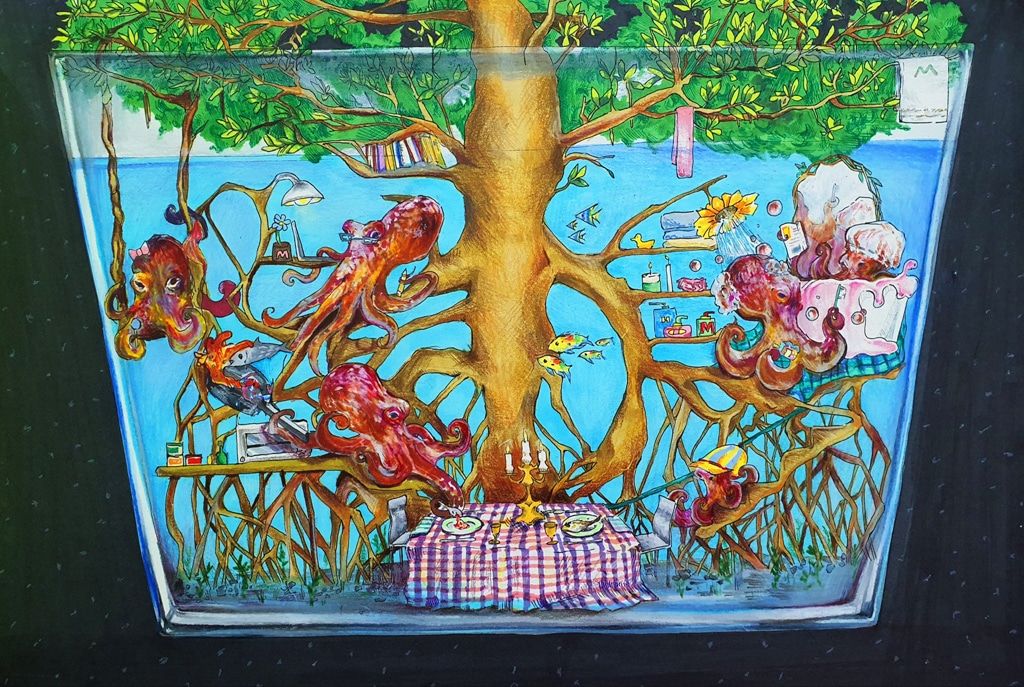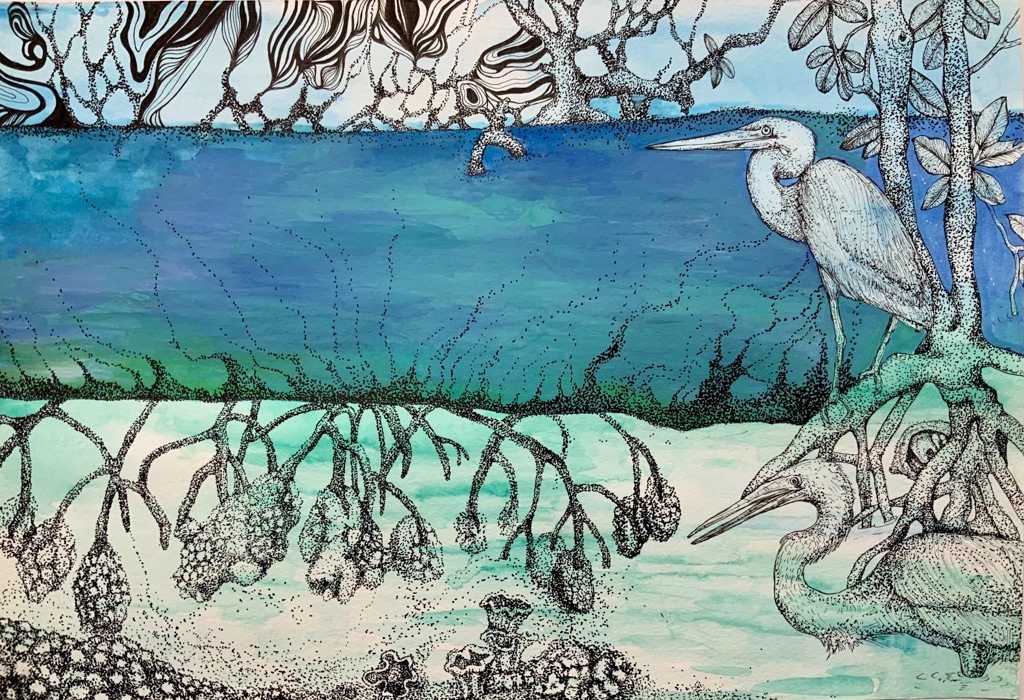Winners of the 2021 Science Without Borders® Challenge
In 2021, the Science Without Borders® Challenge invited students to explore “The Magic of Mangroves.” This international student art contest focused on the vital role mangrove forests play in coastal ecosystems. Mangroves are extraordinary trees that thrive where land meets sea, protecting coastlines from storms, filtering water, storing carbon, and providing shelter for countless species both above and below the waterline.
Students from 63 countries participated in the competition, creating artwork that showcased the beauty and importance of mangroves. Their pieces highlighted how mangroves serve as nurseries for young fish, provide habitat for diverse wildlife, and help combat climate change by sequestering carbon. Using striking visuals and creative expression, students captured the wonder of these unique ecosystems and their benefits to both people and the planet.
Winning entries came from talented young artists in the United States, South Korea, and Slovakia. Their artwork not only celebrated the magic of mangroves but also inspired greater awareness of the need to protect these critical coastal forests. The contest illustrated how art can be a powerful tool for ocean conservation, engaging the next generation in the fight to preserve our natural world.
Winners & Finalists Ages 11-14:
First Place: "Shelter" by Dana Chung, Age 13, Connecticut, United States of America
Artist's Statement: Mangrove forests are the barrier that protects locals from severe ocean waves and flooding, and also a shelter that protects sea animals. There are many various reasons that Mangrove trees are a valuable property for not just for humans, but also for the Earth. For this art piece, I depicted a safe, protective shelter that is for all aquatic animals.
Winners & Finalists Ages 15-19:
"Roots of the Sea" by Andrew Park, Age 16, California, United States of America
Artist's Statement: In my piece, it shows the importance that mangroves have on providing habitats for living organisms. Mangroves are important breeding and nursery grounds for many different types of animals such as coastal birds. The importance of food is shown because the different leaves and plants that grow in mangroves help provide a base in the food web for the creatures living in the environment. Mangroves also work together with other ecosystems such as coral reefs and seagrass by improving the water quality for other ecosystems. Without mangroves, it would have a big effect on the lives of animals and all living organisms in general. Without the long roots, any natural disasters could cause more damage because mangroves help alleviate some of the damage that occurs by absorbing some wave energy. Mangroves are very important to the environment, and it is very important and necessary to take precautions to save them.




